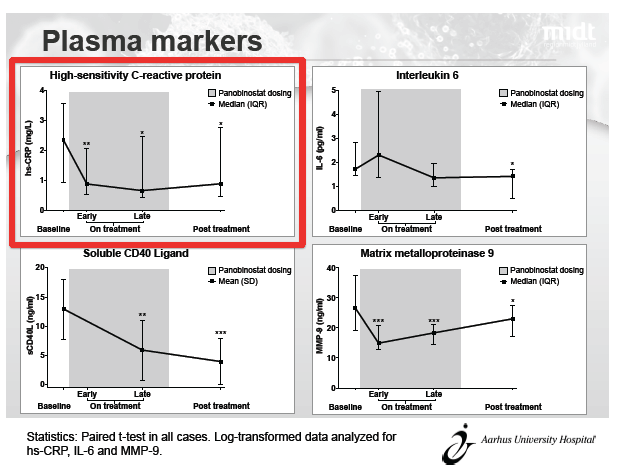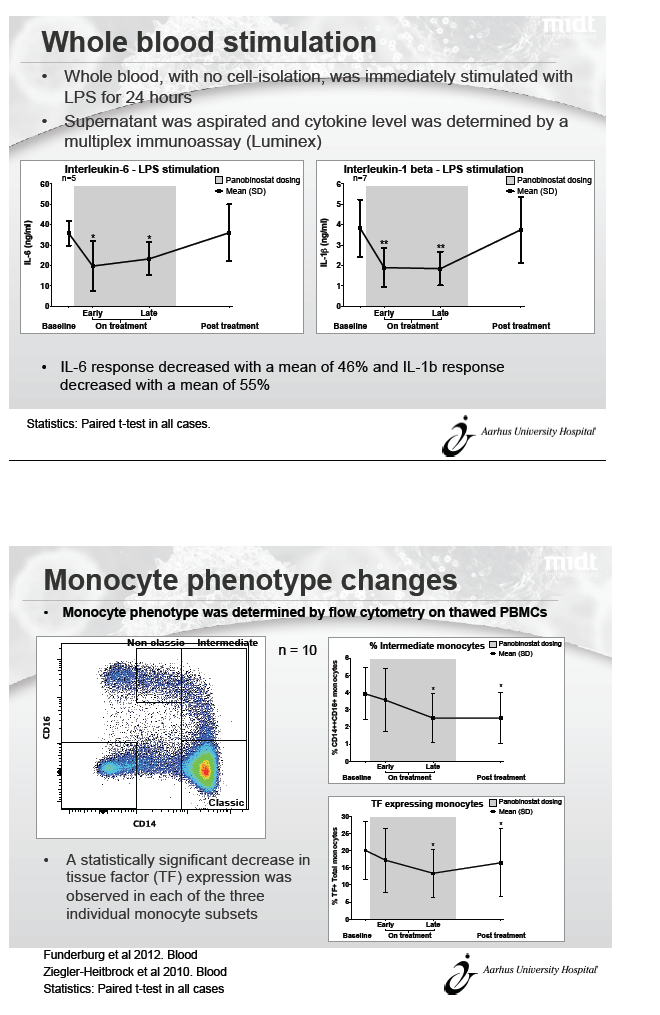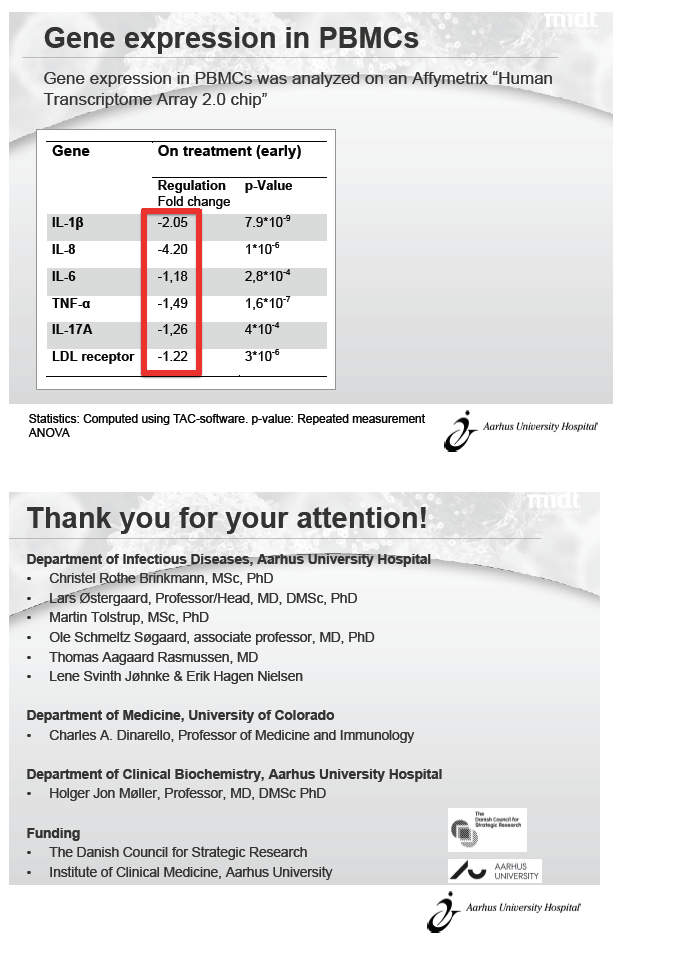 |
 |
 |
| |
Treatment with the histone deacetylase inhibitor Panobinostat markedly reduces chronic inflammation in HIV-infected patients
|
| |
| |
Reported by Jules Levin
20th International AIDS Conference, July 20-25, 2014, Melbourne
Anne Sofie H. K. Kjaer
Dept. of Infectious Diseases,
Aarhus University Hospital, Denmark
"Chronic inflammation and immune activation have been suggested to cause cardiovascular disease in HIV-infected patients despite antiretroviral treatment (ART). Histone deacetylase inhibitors (HDACi) exert potent anti-inflammatory effects. We hypothesized that the HDACi Panobinostat would reduce inflammation in well-treated HIV-patients......In a non-randomized interventional phase I/II trial designed to evaluate the effect of Panobinostat on the latent HIV-1 reservoir, 15 aviremic HIV-infected patients on ART were treated with Panobinostat (20 mg; dosed three times/week every other week for eight weeks). Plasma levels of eight soluble biomarkers were determined at baseline, four days after initiating treatment and four weeks after completing treatment using ELISA and Luminex. Changes from baseline were analyzed"
IAC: The HDAC inhibitor romidepsin is safe and effectively reverses HIV-1 latency in vivo as measured by standard clinical assays (07/22/14)...
webcast - http://pag.aids2014.org/flash.aspx?pid=4968



------------------------------------
Program abstract
Background: Chronic inflammation and immune activation have been suggested to cause cardiovascular disease in HIV-infected patients despite antiretroviral treatment (ART). Histone deacetylase inhibitors (HDACi) exert potent anti-inflammatory effects. We hypothesized that the HDACi Panobinostat would reduce inflammation in well-treated HIV-patients.
Methods: In a non-randomized interventional phase I/II trial designed to evaluate the effect of Panobinostat on the latent HIV-1 reservoir, 15 aviremic HIV-infected patients on ART were treated with Panobinostat (20 mg; dosed three times/week every other week for eight weeks). Plasma levels of eight soluble biomarkers were determined at baseline, four days after initiating treatment and four weeks after completing treatment using ELISA and Luminex. Changes from baseline were analyzed using paired t-test. Gene expression in PBMCs was analyzed on a HTA 2.0 chip (Affymetrix); fold changes and p-values were computed using TAC software.
Results: Multiple significant changes from baseline in plasma inflammation were observed during and after Panobinostat treatment (table 1). Notably, hs-CRP decreased by a mean of 50% during treatment and this change persisted 4 weeks post-treatment. Plasma levels of IL-6, MMP-9, sE-selectin and sCD40L also decreased, while sCD14 increased. On day 4, IL-1ß and IL-8 gene expression levels were downregulated 2-fold (P=7.9*10-9, FDR= 4*10-6) and 4-fold (P=1*10-6, FDR=0.00016) respectively, compared to baseline.

Conclusions: Panobinostat treatment significantly reduced levels of soluble inflammatory biomarkers known to be associated with all-cause mortality and cardiovascular events. Further, gene expression of potent inflammatory interleukins was strongly downregulated indicating a potential role for HDACis as anti-inflammatory agents in high-risk patients. These findings warrant further investigation.


|
| |
|
 |
 |
|
|